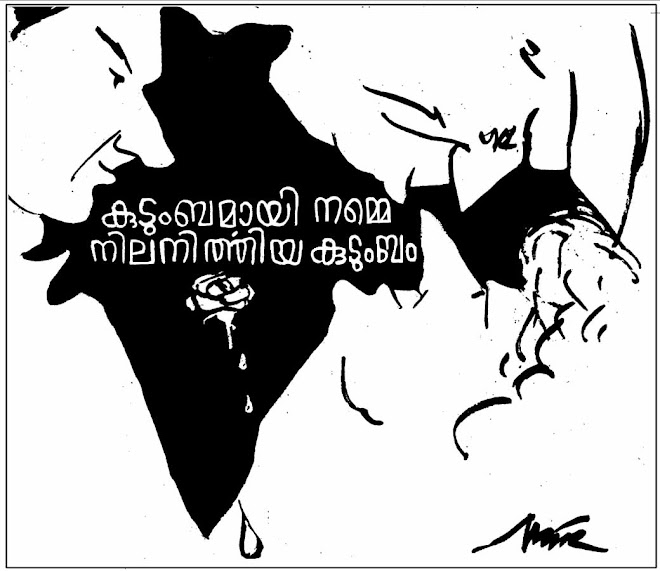by Unni
The last thing one wanted to write on Aravindan was the obit. One remembers Guruji, his cartoon character, warning against vulgarising the sole truth left in this society of ours - death.
The right tribute for Aravindan would be a song or even better, silence. His words were few and so softly uttered that one felt he was apologetic about disturbing the ether.
But the voice flowed when he sang. On a rare public appearance, he would inaugurate the function with a Sanskrit sloka recited in a resonant voice.
No speeches for him. Trained in Hindustani and Carnatic forms, Aravindan’s greatest passion was music, more than filmmaking and cartooning, He often wondered when he would be able to complete his film assignments and just sit at home with his tanpum.
A slimline tape recorder was almost always part of his travel kit. On a visit he would call up and announce with delight that he has acquired a new cassette of Amir Khan. "Would you bring along an MDR or Semmangudi to go with it?" The evening was made. One task that remained was to get rid of the hordes of hangers-on, who were forever around him basking in his celebrity glare. Once that was accomplished, the evening of music would stretch, in his hotel room or in the safety of a friend’s house.
When the taped music ran out he would elaborate his favourite raga "Kedarem". When he built his house in Trivandrum that was the name he gave to it.
The edilor wanted an anecdotal piece. But Aravindan never fitted into a linear matrix. He had confessed that he felt closest to his film character, Esthappan, the nomad who comes and goes and is perceived differently by different people. One could readily list his accomplishments. He cartooned,made films, directed plays, sang, composed music, designed book jackets, theatre costume, posters...
But the person never seemed to do anything at all. Perhaps he just let things happen. He showed no inclination to intervene, bend or mend anything around him. When one sat with him for hours in his house or ran into him in the midst of tight studio schedule he had the same serene pace. No hurry no fuss no adrenalin.
Rather an unusual trait for the cartoonist who functions with quickfire responses under killing deadlines. A whole lot of us used to open the "Mathrubhurhi Weekly" like an Arabic book from the back-cover. Aravindan’s full-page cartoon strip appeared week after week for thirteen years on the last page.
It had nothing hilarious about it. It seldom had a sharp comment or clever word play, Nor did it show the thinker cartoonist’s compulsive urge to make a point every time. Yet this open-ended serial where characters aged with time and the drawing evolved from external details to inward minimalism, has no parallel among Western comic strips. it turned out to be an excellent source of Kerala’s social history of the sixties and early seventies Aravindan had overcome the inherent limitations of the small canvas medium to reflect a vast range of life
When one kept persuading him to resume the serial he would say maybe, adding that, he would have to reconceive the treatment and draw with freer lines. He would keep talking about the sheer excellence of Namboodiri’s drawings and the authentic talent of Raju Nair, Kerala’s little known Cartoonist. And when one’s drawing tended to slide into mechanical efficiency one detected his undertone of disapproval.
No short cuts, he would say One had to constantly refine one’s lines. He knew true drawing, true music and perhaps the true word. When he signed off as ‘Snehathode" (affectionately) at the end of simple four-line Ietter, it somehow rang so true.
-Sunday Mail -March 24, 1991
Cartoonscope 4776
15 years ago




No comments:
Post a Comment